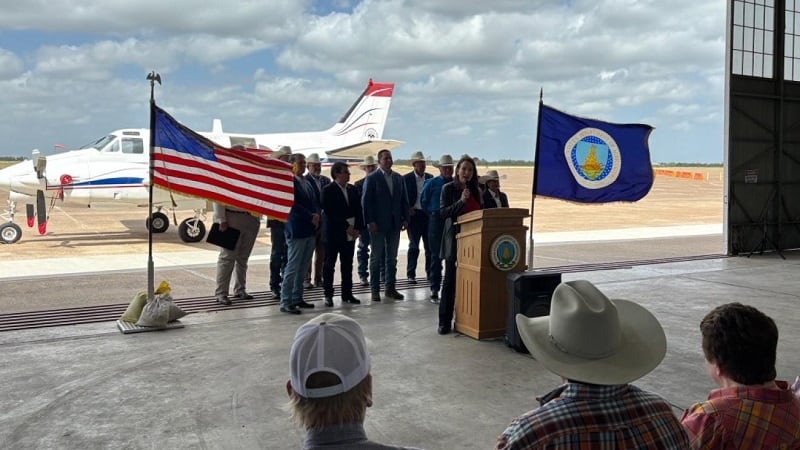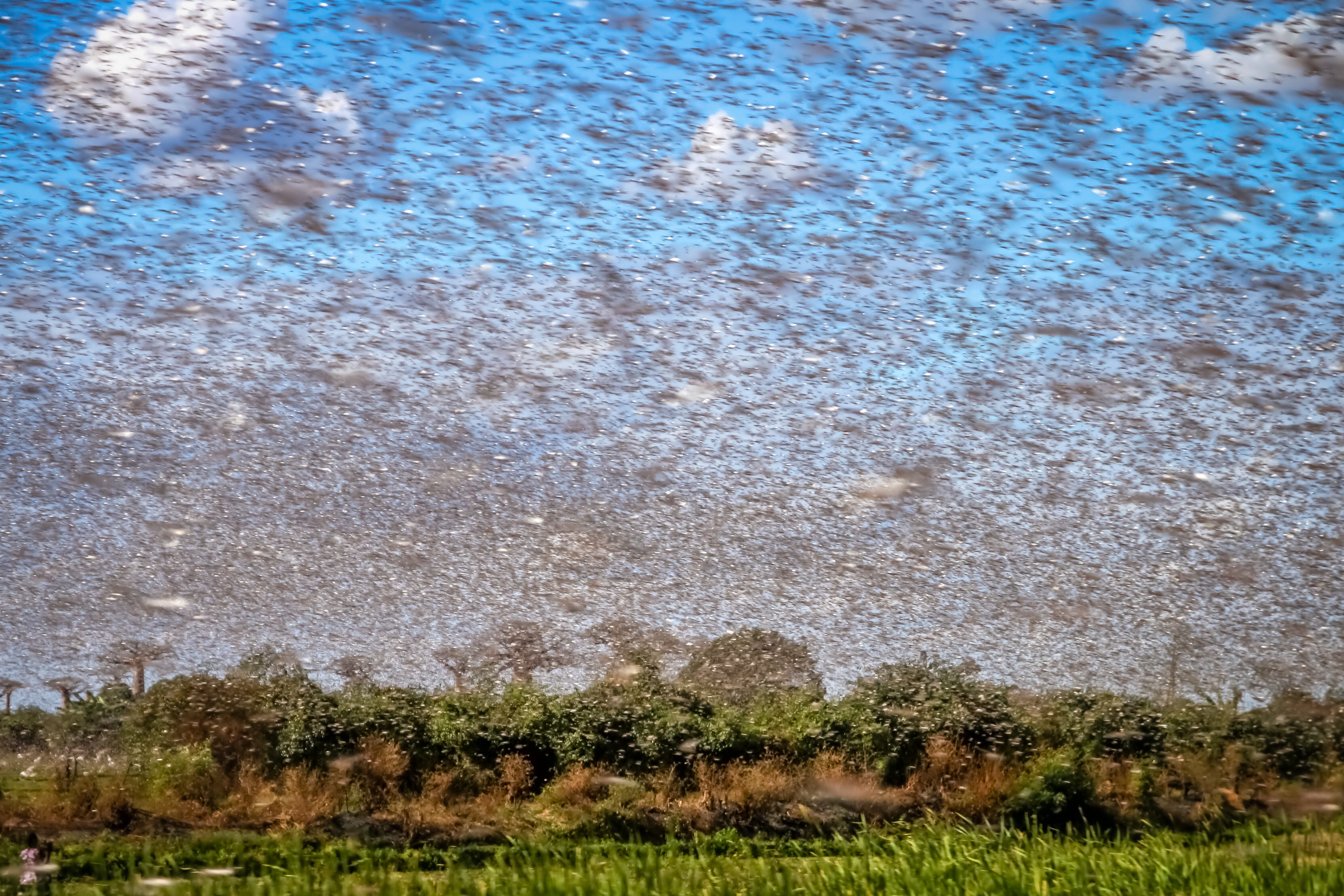Brooke L. Rollins, secretary of agriculture at USDA, visited the groundbreaking of a $8.5 million sterile New World screwworm (NWS) fly dispersal facility at Moore Air Base on June 18 — which is projected to be operational this year — as the agency unfurls a five-pronged plan to swat the reemergence of the pest in North America.
NWS fly larvae can infest livestock, animals and people by burrowing into flesh, causing “serious [and] often deadly damage,” the USDA shared. NWS flies were eradicated in the US thanks to sterile technologies in 1966. Recently, the insect re-emerged in Mexico, causing concerns of a potential wider outbreak on the continent, USDA said.
The US suspended Mexican imports of live cattle, horse and bison on May 11, 2025, in response and will reassess the situation every 30 days. If NWS flies enter the US, Texas’s cattle industry could lose an estimated $2.1 billion, according to Texas A&M.
Additionally, the USDA outlined a five-pronged plan to prevent the pest from re-establishing a foothold in the US, focused on partnering with Mexico, protecting US borders, maximizing readiness, taking the fight to the insect and creating new solutions.
The USDA will explore ways to develop more effective insect lures and traps and next-generation NWS treatments, including electron beam (e-beam) and other radiation technology to produce sterile flies. E-beams create chemical reactions without a catalyst and are often used to sterilize food and medical equipment, according to Fermilab.
Additionally, the agency will hold four public hearings on various ways to eradicate the pest, with one hearing on sterile fly technologies, technologies beyond sterile flies, the pros and cons of creating sterile flies domestically or internationally and a hearing for innovative ideas, the agency shared.
“We do not take lightly the threat NWS poses to our livestock industry, our economy, and our food supply chain. The United States government will use all resources at its disposal to push back NWS, and today’s announcement of a domestic strategy to bolster our border defenses is just the beginning. We have the proven tools, strong domestic and international partnerships, and the grit needed to win this battle,” Rollins shared in the press release.
US seeks cooperation with Mexico in NWS fight
The US and Mexico are actively working on solutions to address the NWS problem on the continent. Last month, the USDA invested $21 million to convert a fruit fly facility in Metapa, Mexico to produce 60-100 million sterile NWS flies a week, which will “push the population further south in Mexico,” the agency stated.
Additionally, the USDA performed audits of Mexico’s animal health controls over the last several weeks and is improving technology to detect NWS in the country, the agency said.
The cattle industry responds
Various cattle industry trade groups and associations came out strongly in support of the USDA’s plan, including:
- Buck Wehrbein, president of the National Cattlemen’s Beef Association, said, “The only way to protect the American cattle herd from the devastating threat of New World screwworm is by having a sufficient supply of sterile flies to push this pest away from our border. To accomplish that, we need a sterile fly production facility of our own in the United States.”
- Russell Boening, president of the Texas Farm Bureau, said, “As the screwworm threat has moved north from Panama into Mexico, Texas Farm Bureau made the establishment of a domestic sterile insect facility one of our highest priorities. A robust, science-based defense, anchored by a US-based facility, is essential to combatting this destructive pest.”
- Laphe LaRoe, chairman-elect of the Texas Cattle Feeders Association, said, “These additional resources, combined with robust implementation of surveillance, sampling, reporting and enhanced treatment protocols provide a strong foundation for the US to continue fighting the screwworm fly where it is today and ensure continued confidence in cattle and beef trade between the US and Mexico.”




